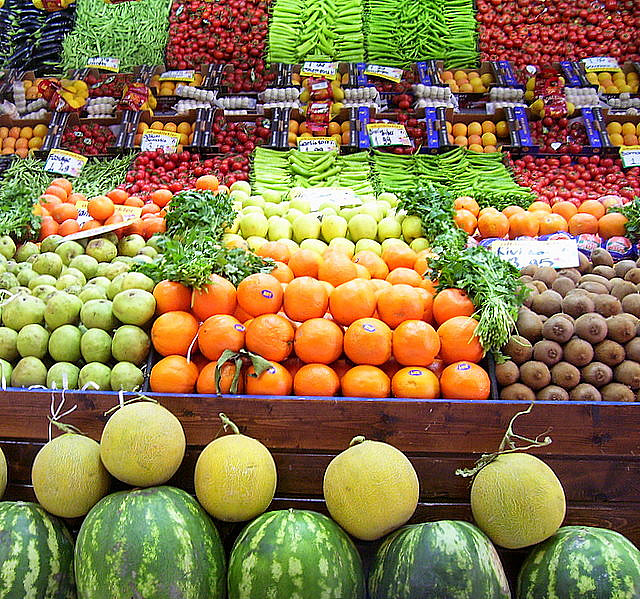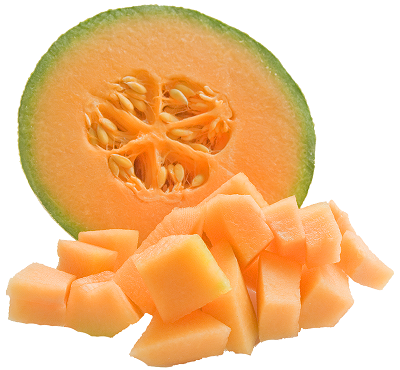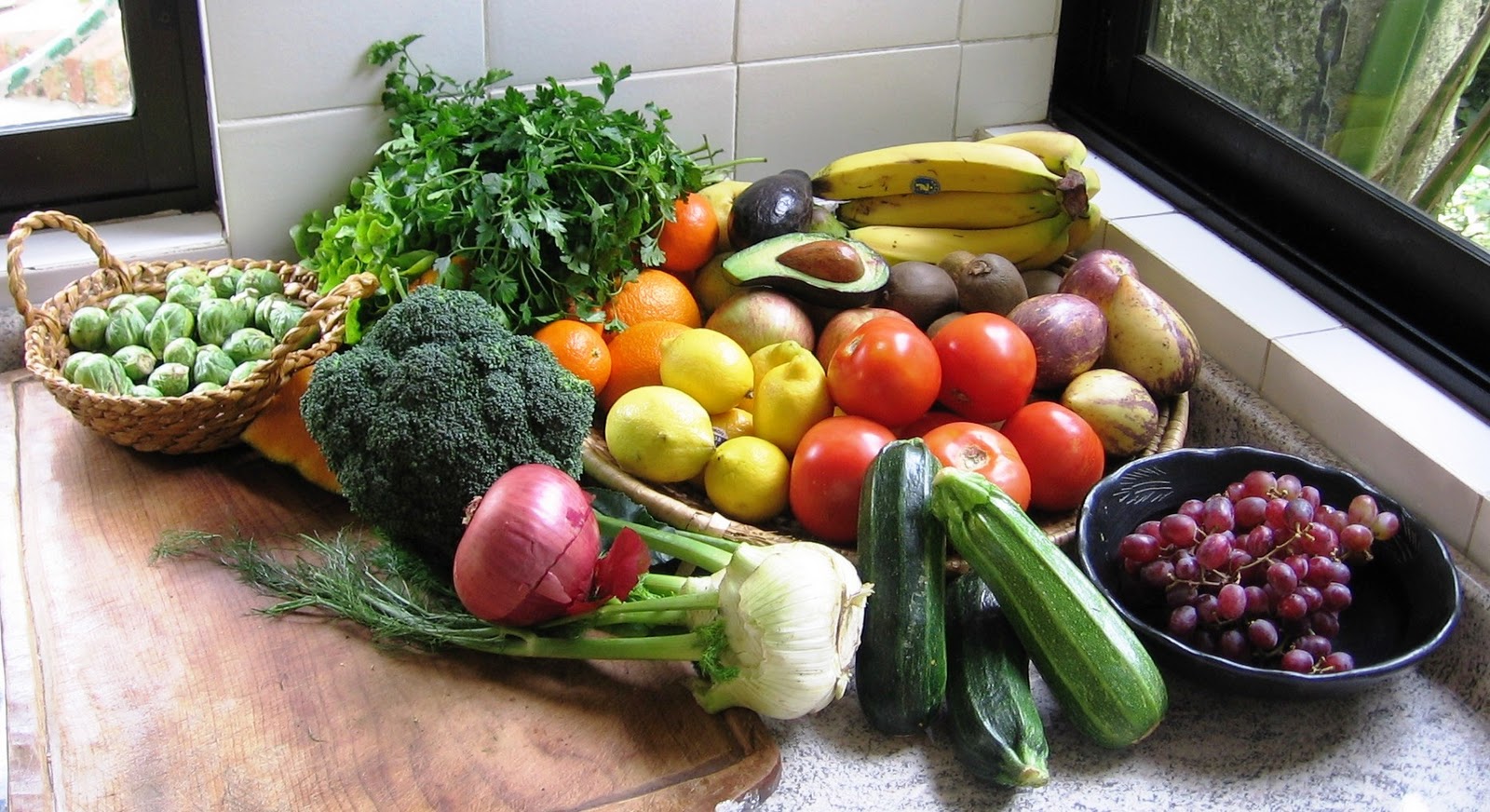When fresh fruits and vegetables are eaten raw, there is an increased chance for food-borne illnesses to occur. Since the U.S. per capita consumption of fruits and vegetables is greater than 259 pounds per year, (USDA 2018), safe and sanitary processing of fresh fruits and vegetables is important. Cooking or processing by heat or cold reduces food-borne pathogens, the bad germs that make us sick.

Who regulates the spread of food-borne illnesses?
The regulatory agencies responsible for the oversight for food-borne illnesses are the Food and Drug Authority (FDA) and our state public health authorities. The Center of Disease Control gets involved with food-borne illnesses when two or more people become ill from eating or drinking the same contaminated food or drink (and usually from the same resource).
An entry port for disease pathogens (plant or human) occurs when fruits or vegetables are bruised or mechanically blemished. Once the disease pathogen gets under the skin of the fruit or vegetable, it festers and grows. When harmful food-borne germs (pathogens), such as Salmonella, E. coli, Listeria, Norovirus, and Hepatitis A enter the fruit or vegetable, we have the potential to become ill. Many of these germs cause symptoms that mimic the flu. If only it were flu symptoms; food-borne illnesses infected between 30-3000 people annually (FDA 2018). Some people do not overcome food-borne illnesses and die.
How long is the trail of food from the farm to your plate?

Our farmers do everything they can to safely handle fruits or vegetables prior to the items entering the fresh market. Some fruits and vegetables travel a long trail from the point of harvest to the point of consumption. Keep this in mind when you are shopping for fresh fruits and vegetables. The longer the trail, the more likelihood of increased exposure to pathogens. Consequently, how fresh can an item be if it traveled a long trail to your plate?
The fruit or vegetable’s exposure to pathogens can happen any place along that trail. Unfortunate for our farmers, their operations are the first place we point to when an food-borne outbreak takes place. The trail to a consumer’s plate can include the shipment truck, the distribution center and their deliver trucks, packaging centers, the back of a grocery store and on the grocery shelf itself.
Are their hands clean?
Lastly, don’t forget that every customer who was shoppig for fruits and vegetables prior to you may have handled it for freshness. Where have their hands been? Is everyone who touched the produce healthy when they handled that piece of food? Most importantly, were they contagious with some illness that is now on the outer area of the fruit or vegetable? Go back and read the paragraph on pathogens entering a blemish on the skin. ☹
The top consumed vegetables are tomatoes, onion, lettuce varieties, peppers, carrots, and cucumber, coincidentally, in this order of consumption too! So, what can we do as consumers to reduce our exposure to food-borne illnesses when purchasing and prior to consuming fresh fruits and vegetables?
Let’s look at some safety tips.
- Purchase unblemished fruits and vegetables.
- Always! thoroughly wash your hands first, then thoroughly wash the raw produce item with cool running water, whether it has an outer covering or not. Items with an outer covering (think of a cantaloupe), could potentially be contaminated with a pathogen. If it is contaminated with a pathogen, as you cut the exterior, the knife can carry the pathogen to the inside portion of the produce.

Cut cantaloupe 
Fresh Cantaloupe - Use a vegetable brush on items that have a tougher outer skin or rind.
- Root vegetables like carrots, radishes, and potatoes should also be thoroughly scrubbed with a vegetable brush.
- Chill or refrigerate, at 40°F, shortly after you cut the item if you are not consuming it shortly thereafter.
- When washing items, pay close attention to the stem attachment area. Germs can lurk there.
- Wash strawberries well; the seeds are also an area that provides refuge for pathogens.
- Blanching items in a hot bath will alter how it looks but does not greatly alter how it tastes. Blanching reduces surface pathogens.
- If you are freezing an item, wash it first to remove potential pathogens. If you wash it before freezing, you will not have to remember if you did or did not thoroughly wash it.
- Consequently, produce labeled “organic” does not give the item a free pass from food-borne pathogens. Treat them equally!
- Follow proper food preparations and proper food storage practices to reduce food-borne pathogens.
In short, fresh fruits and vegetables provide necessary nutrients for healthy food choices. Taking a few minutes when you come home from the grocery store (or farmer’s market) to properly clean your produce can reduce your exposure to food-borne pathogens that cause illnesses. When you can, buy local produce. This supports our economy and our farmers!
Support your local farmer and wash your raw produce.
Questions: Call Lisa Hickey, Sustainable Food Systems Extension Agent at (941)722-4524 ext 1817. https://sfyl.ifas.ufl.edu/manatee/agriculture/vegetable–row-crops/
Are you a farm entrepreneur or small farm operation and you need assistance? Visit our Small Farms webpage at https://smallfarm.ifas.ufl.edu/production/crops/

 0
0
